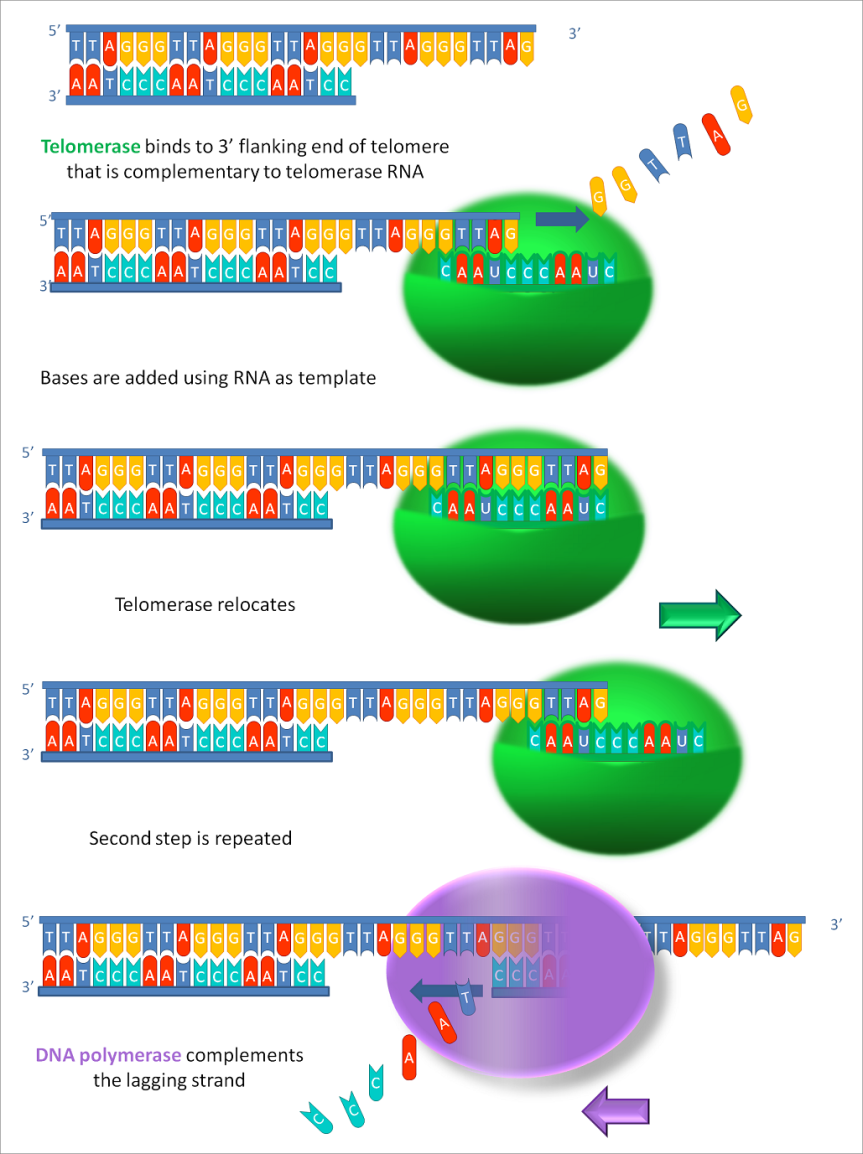
A telomere is a genetic sequence (TTAGGG for vertebrates) that is repeated at the end of the chromosomes many thousands of times and serves as a protective cap that keep the chromosome stable and protected from degradation. Every time a cell divides, the telomere length shortens. This shortening had been linked to aging or, in other words, the shorter the telomere, the shorter the lifespan. But in some cells, like the germ cells, stem cells, or malignant cells, there is an enzyme that adds the telomere sequence back on the chromosome after the cell has divided.
The telomerase has been discovered in 1984 by Carol W. Greider and Elizabeth Blackburn in a protozoan (i.e. a unicellular eukaryotic organism) commonly found in puddles and ponds called Tetrahymena. I wanted to give a synopsis of their experiments, but who better to explain the work then the authors themselves? Here is a video of Dr. Blackburn herself explaining step by step in 20 minutes the rationale and the findings of the experiments for which she and Carol W. Greider received the Nobel Prize in Physiology or Medicine in 2009. If 20 minutes of genetics just whet your appetite, perhaps you will want to watch the extended 3 hours lecture (Part 1, Part 2, Part 3).
Reference: Greider, C.W. & Blackburn, E.H. (December 1985). Identification of a specific telomere terminal transferase activity in Tetrahymena extracts. Cell. Vol. 43, Issue 2, Part 1, pg. 405-413. DOI: 10.1016/0092-8674(85)90170-9. Article | FREE FULLTEXT PDF
By Neuronicus, 25 October 2015

